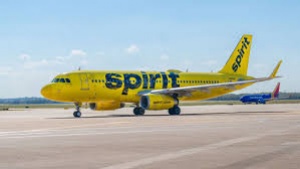flynas Achieves Significant CO2 Reduction in 2024
flynas has emerged as a trailblazer among Arab airlines in reducing carbon dioxide emissions, earning the top ranking in the annual “Cirium Flight Emissions Review” for 2024. The report highlights flynas’s commendable sustainability policies, which have resulted in the airline being placed 14th globally among the leading airlines in reducing emissions.
In 2024, flynas achieved a remarkable level of efficiency, recording CO2 emissions of only 61.5 grams per available seat kilometer (ASK), which represents a 1.6% decline compared to the previous year. Despite expanding its flight operations by 25.2%, the airline managed to reach a total CO2 emission of just 1.5 million tons, positioning it as the lowest emitter among the top fifteen global performers.
Factors Contributing to flynas’s Success
The report underscores that several factors contributed to the notable efficiency of flynas and its competitors, including investments in fleet renewal, maximizing seat density in available markets, and optimizing flight operations. These strategies not only enhance operational efficiency but also demonstrate the airline’s commitment to sustainability.
Investments in Modern Aircraft
In line with its sustainability goals, flynas recently welcomed the arrival of its fifth A320neo aircraft this year, bringing the total number of these advanced models in its all-Airbus fleet to 58 out of 64 aircraft. The A320neo is celebrated globally for its environmentally friendly attributes, and consistent efforts are being made to expand its presence within flynas’s fleet. In July, flynas solidified its commitment to future growth by signing an agreement with Airbus to purchase 160 new aircraft, which includes various models built for efficiency.
This substantial order of 280 aircraft over the next seven years marks one of the largest in the region, aligning with the growth goals outlined in the Saudi Vision 2030 initiative.
Impact of Technological Innovations
Investing in the A320neo fleet not only satisfies operational needs but also reflects the airline’s responsibility towards environmental stewardship. This aircraft model integrates cutting-edge technology and modern engineering, achieving significant reductions in fuel consumption—up to 20% compared to its predecessors—and minimizing its carbon footprint. Additionally, its noise reduction capabilities enhance passenger comfort while reducing environmental impact.
Strategic Growth Plan for the Future
Sustainability is strategically integrated into flynas’s broader growth and expansion plan, which is cohesively aligned with the objectives of the National Civil Aviation Strategy. This plan aims to bolster connectivity for the Kingdom, targeting 250 international destinations and 330 million passengers by 2030, while also facilitating access to two holy sites as part of the Pilgrims Experience Program.
Expanding Network and Services
Since its inception in 2007, flynas has grown to operate 139 routes across more than 70 destinations in 30 countries, with over 2,000 weekly flights. The airline has successfully transported over 80 million passengers, with ambitions to extend its reach to 165 destinations, enhancing its footprint in the travel market.
A Historical Perspective on Airline Emissions
The airline industry has long grappled with the challenge of rising carbon emissions, with tourism generally recognized as a significant contributor to greenhouse gases globally. However, recent years have marked a shift as numerous airlines invest in sustainability initiatives and low-carbon technologies, which aim to decrease their ecological footprints. The urgency for airlines to adapt comes amid escalating concerns about climate change and the influence it has on travel destinations that depend heavily on climate-driven tourism.
Adoption of Sustainable Practices
As public awareness of environmental issues rises, travelers increasingly favor airline companies that prioritize sustainability. As a result, many airlines, including flynas, are transitioning towards greener operational practices. Measures such as the adoption of modern, fuel-efficient aircraft, and initiatives to optimize energy use in operations are now considered business necessities rather than optional enhancements.
Forecasting the Future of Airlines in Sustainable Travel
Looking ahead, as global tourism dynamics change, the demand for environmental responsibility will continue influencing how airlines operate. The successful implementation of low-carbon strategies paired with innovations in technology can position airlines to meet both current and future environmental obligations while enhancing their brand appeal to eco-conscious travelers.
In summary, flynas leads the way as an example of the airline industry’s commitment to sustainability and reduced carbon emissions. As the airline continues to innovate and expand its operations in alignment with global sustainability efforts, it showcases the essential role aviation plays in enhancing eco-friendly travel.
Whether exploring remarkable destinations by yacht, sailing along sun-kissed coastlines, or renting boats for leisure, a significant understanding of carbon footprints remains vital. Companies like GetBoat.com offer a marketplace for renting sailing boats and yachts, aiming to accommodate various preferences and budgets, advancing the ultimate goal of sustainable tourism while enriching travelers’ experiences on the water.


